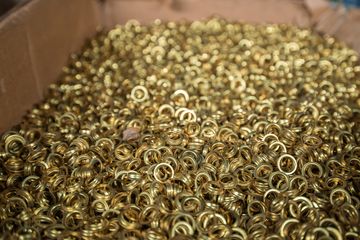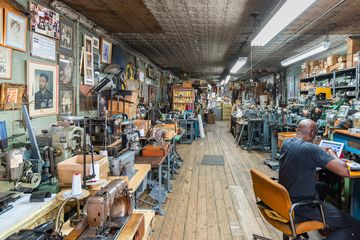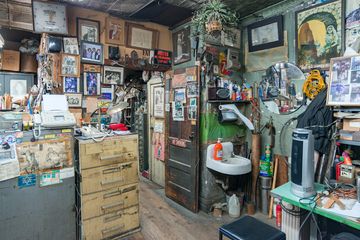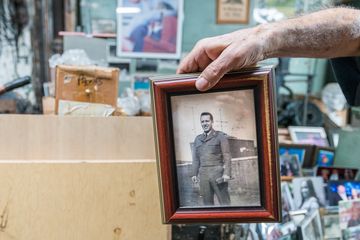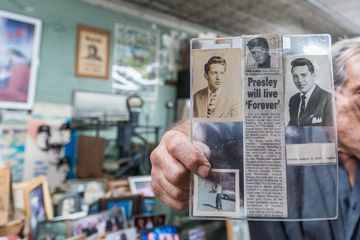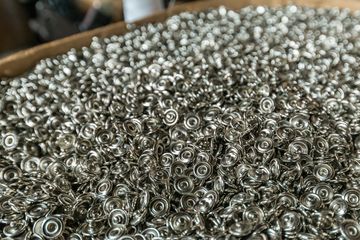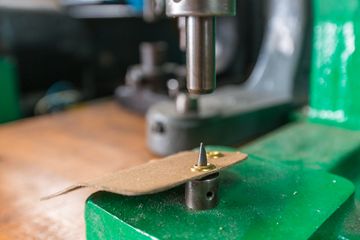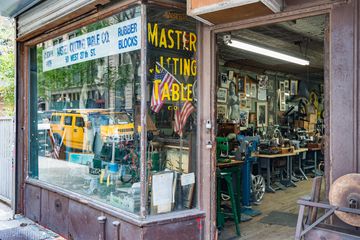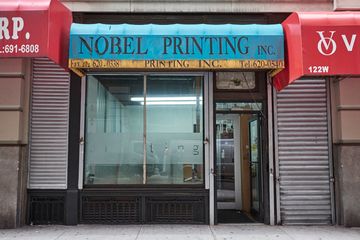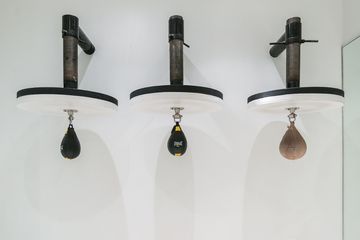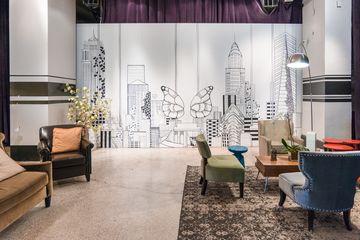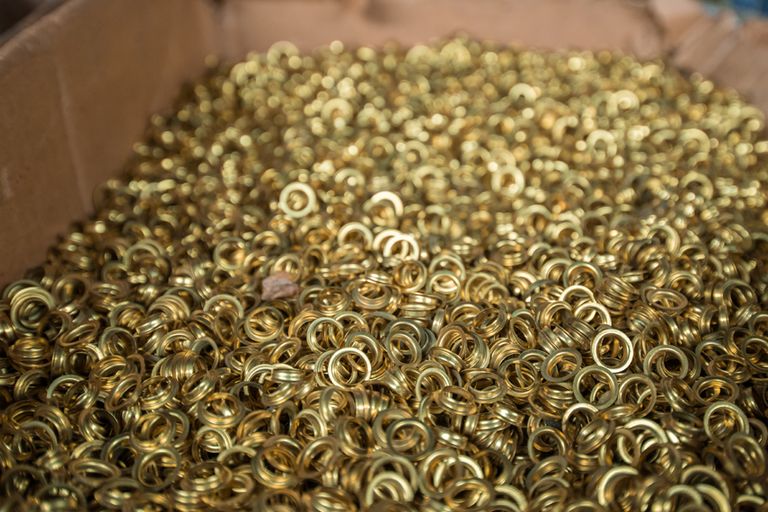
A relic of a bygone era, this space, full of antiques, is an experience. In 1924, Arnold Morak’s father opened a store “downtown” to sell textile-manufacturing machinery, supplying what was then an enormous industry in Manhattan. This original location became a victim of the construction of Washington Square Park, and so the Moraks moved to their current location on 27th, in the heart of the textile district. When Arnold returned from a stint in the Korean War many decades ago, he took over the family business. Slowly, however, the businesses Arnold was selling to began to leave for cheaper rent, first in surrounding areas, and later overseas. Meanwhile, technology evolved, rendering machines with which Arnold specialized obsolete. The flow of customers slowed to a trickle and eventually dried up. “In the late 1980s, this type of machinery died,” he explained to us, pulling no punches.
Today, Arnold, well into his eighties, sits with his co-worker, Jonesy, lording over his kingdom of ancient artifacts and living life at his own pace. The inventory of memorabilia that Arnold has amassed over the years is intriguing. What struck a chord with me were the dozens of miniature Singer sewing machines used by milliners a century ago (my grandfather made ladies' hats when I was a little girl). As I strolled through the store, taking it all in, I felt like I was invited to peer into the long and winding history of this city. Nothing has a price tag on it, but I encourage anyone fascinated by the fashion industry and the materials used in this bygone era to stop by and have a peek.
Asked what he does here, Arnold replied: “nothing.” Asked why he comes in, he said: “I don’t want to stay at home. I love my wife of over sixty years, but sometimes you just have to get away.” Having invested in property in New York when it was not astronomically expensive, Arnold actually owns this building and has the luxury of using it as a “day home.” He is holding out against selling to developers bent on transforming the space. “I’ll let my kids make that mistake,” he says. “You can walk with a straight backbone knowing you own property in New York. It’s a marvelous feeling.” Someday, inevitably, this store will be torn down and reborn as an expensive and expansive apartment house, but for now, it is a reminder of the great history our city has experienced, and it has been a hell of a ride for our new friend, Arnold Morak.
